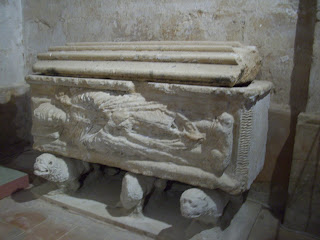
So after 55 days, I have left Spain. Overall, the research trip was quite successful. It has also been a good experience from a variety of perspectives: more time with my dad's family, great improvement in my Spanish skills, and I saw lots of great stuff. Overall though I feel like I have been gone way too long. I doubt I will do two months again.
This was also the first time I actually lived in a big city for any length of time. I can say unequivocally that I don't really like it. Madrid is a beautiful city, but the metroplex is a hot, sweaty, smelly, dirty place, with lots and lots of people. There are certainly advantages to living in big cities: you don't need to drive, lots of things to see and do, almost too many options for just about everything. But after this test, I think I can safely say that I am not a big city person.
My favorite part of this trip was definitely Toledo. That town is much more my speed, and it is absolutely gorgeous. I strongly suspect that Burgos and Segovia would be equally livable.
So all in all I am happy to be home. I will miss lots of little things, like jámon and Fanta de Límon, chorizo and sangria... mostly food I guess. I will also miss getting to treat my research like a full time job. The research is what makes academia great, but the reality of the matter is that it almost never gets one's undivided attention. Damian Smith, my friend from Saint Louis University, mentioned to me that every professor always talks about their PhD research as though it was the best time of their lives, but also admit that it was stressful, confusing, and difficult. I agree with that, and wholeheartedly hope that this was not the best two months of my life.













